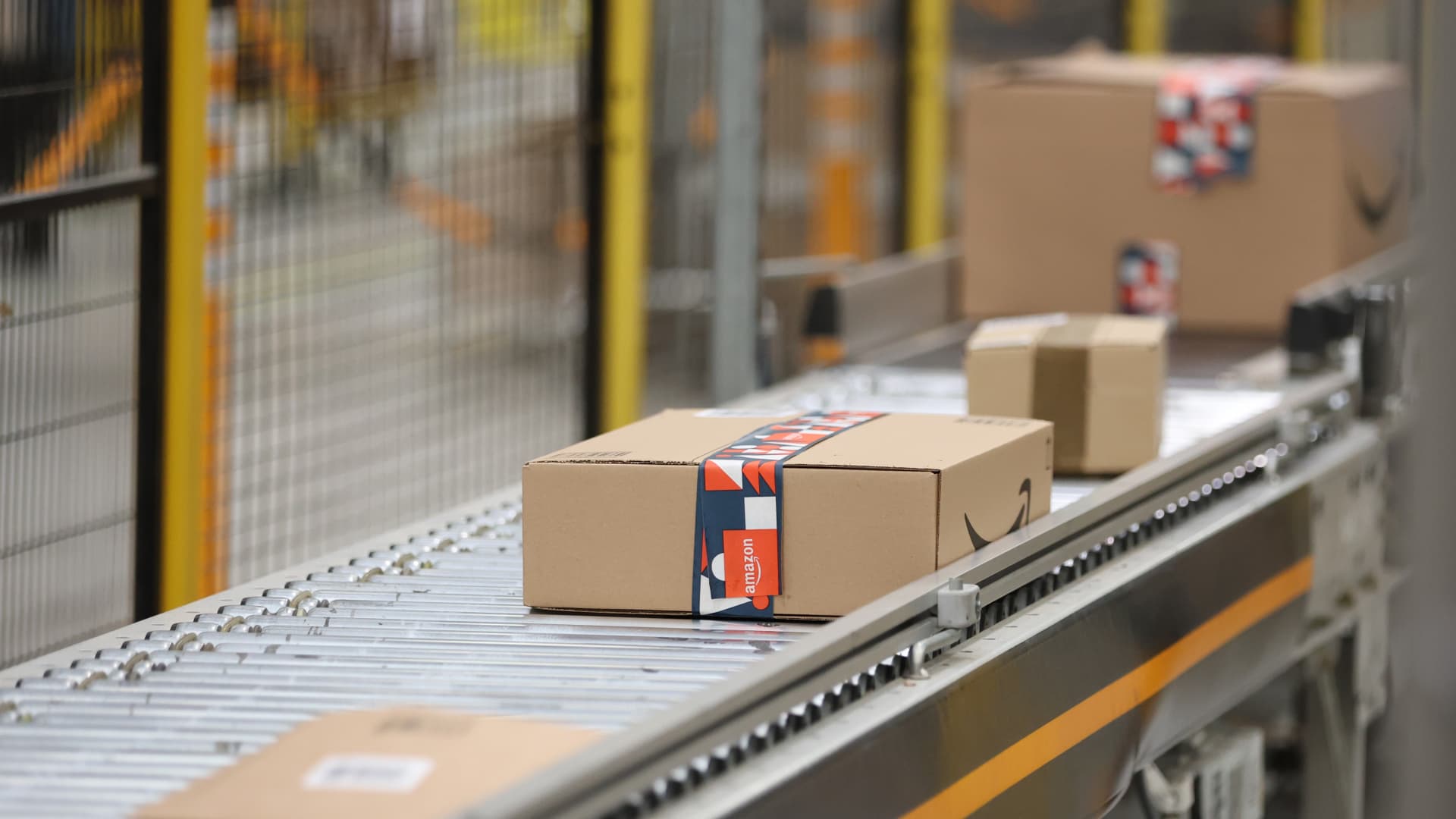Amazon is increasingly using robotics in its fulfilment centers to carry out repetitive tasks such as lifting heavy packages.
Nathan Stirk | Getty Images News | Getty Images
Amazon is focusing on using artificial intelligence to speed up deliveries — by minimizing the distance between its products and customers, a top executive told CNBC.
Stefano Perego, vice president of customer fulfilment and global ops services for North America and Europe at Amazon, outlined how the company is using AI when it comes to logistics.
One area is in transportation, such as mapping and planning routes, taking into account variables like the weather, Perego said.
Another area is when customers search from products on Amazon to help them find the right goods.
But a key focus right now for Amazon is using AI to figure out where to place its inventory.
“I think one area that we consider key in order to lower cost to serve is on inventory placement,” Perego said.
“So now, I’m pretty sure you’re familiar with the vast selection we offer to our customers. Imagine how complex is the problem of deciding where to place that unit of inventory. And to place it in a way that we reduce distance to fulfill to customers, and we increase speed of delivery.”
Amazon has been focusing on a so-called “regionalization” effort to ship products to customers from warehouses closest to them rather than from another part of the country.
But doing so requires technology that is capable of analyzing data and patterns in order to predict what products will be in demand and where.
That’s where AI comes in. If a product is nearer to customers, Amazon will be able to make same-day or next-day deliveries, like what its Prime subscription service offers.
Perego said the efforts are progressing well. In the United States, more than 74% of the products customers order are now from fulfilment centers within their region, according to Amazon.
Robotics focus
Amazon is also using robotics in its fulfilment centers to help with repetitive tasks such as lifting heavy packages.
The company said that 75% of Amazon customer orders are handled in part by robotics.
There’s a debate over how robotics and artificial intelligence — such as the ChatGPT AI chatbot developed by startup OpenAI — will affect jobs. A Goldman Sachs report earlier this year suggested there could be “significant disruption” to the global labor market, with automation affecting 300 million jobs.
Perego described automation as “collaborative robotics,” underlining how Amazon sees humans and technology working together.
“I think that what is happening is really a transformation of the type of jobs,” Perego said.
The executive said that when automation and AI become more widespread, they will change, rather than eliminate, the jobs that workers perform.
“Eventually, the type of job that an employee will be called to do in a fulfillment center will be increasingly a high judgment type of job,” Perego said. “And the heavy lifting and repetitive tasks will be done through robotics. That’s fine. It’s a transformation rather than a substitution.”





















Discussion about this post